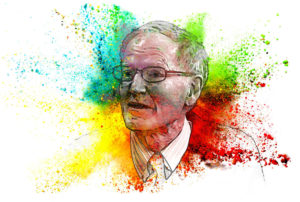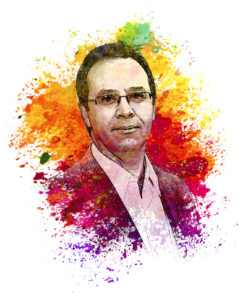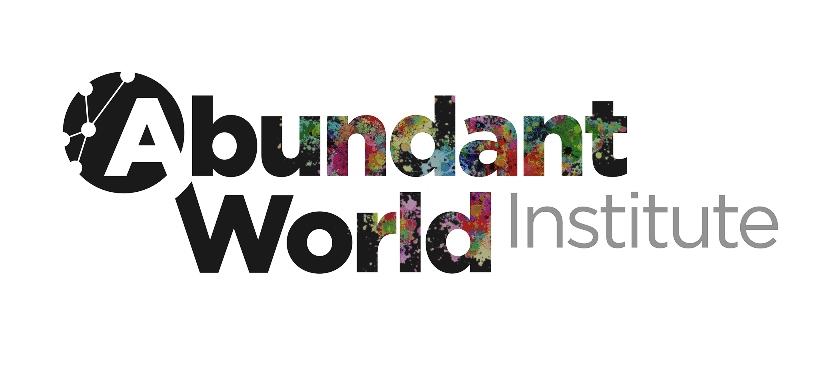Join Abundant World Institute executive director John Schroeter in a wide-ranging conversation with Carver Mead and George Gilder—two of the most gifted thinkers of our time—two men who have substantially advanced the state of abundance in every sphere of life. Filmed in the historic Caltech Athenaeum, the stories told span the surprising history of Moore’s Law to groundbreaking work in superconductivity; the state of education to the power of capitalism; information theory to a new theory of physics—and much more.
Quick Reference Video Index
00:1:00 Introduction, Moore’s Law—the mechanism of Future Shock.
00:5:00 The early industry resistance to Moore’s Law.
00:11:30 The learning curve—Moore’s Law’s big idea.
00:13:35 Moore’s Law’s shadow side: aggressive short term thinking; with Moore’s Law slowing down, will it pay once again to think long term?
00:16:50 We live in an exponential age. How then do we square this with the slowing down of Moore’s Law—the very basis of exponential progress?
00:20:35 Moore’s Law—a belief in the future meets resistance to new technologies.
00:25:20 Electrons all the way down: Carver Mead’s unification of electromagnetism and quantum systems.
00:27:10 Why the legacies of science, technology, and innovation can restrict new thinking.
00:28:00 Rethinking Maxwell’s Equations.
00:35:50 On superconductors and quantum computing.
00:44:00 On the physics of computation: Carver Mead’s groundbreaking work with Richard Feynman and John Hopfield.
00:47:58 Long live silicon! Why silicon will remain the dominant workhorse for semiconductor technologies.
00:57:30 Carver Mead’s seminal thinking on neuromorphic models of computation.
01:01:14 On very large scale integration; Gordon Moore’s grand vision.
01:07:40 Democratizing access to the technology: Carver Mead’s pivotal role in the development of the fabless semiconductor model.
01:17:20 On creative possibility, surprise, and making a transformative difference in the world.
01:21:30 Building on a foundation of faith; the world is not a closed system; on experts and beating the trap of “knowing more and more about less and less.”
01:29:30 “Too big to be falsified.”
01:30:30 On rethinking education; restoring curiosity in our schools.
01:37:53 Listening to the technology; learning from failure; thoughts on the design of experiments.
01:45:40 On biomimicry and looking to nature for inspiration.
01:55:45 On technology push versus market pull: why the supply of innovation creates its own demand.
02:02:00 On the venture capital landscape and the challenges in funding technology push projects; the counterintuitive truth of the most successful startups; the impact of policy on entrepreneurship and progress.
02:08:29 Innovation—the very soul of a culture; how our education system and government regulation are hindering innovation.
02:11:40 Novel thoughts on self-driving cars.
02:19:50 Thoughts on the singularity.
02:23:50 On “Google Marxism” and central planning versus free enterprise.
02:26:08 Computing—looking ahead; the folly of well-meaning regulators; the process of innovation; why machines are deterministic, but humans are unbounded, always pursuing new opportunities.
About the Participants
 Carver A. Mead has done much to shape your day-to-day world, as many of the technologies you use every day—including the device you’re using to experience this story—can be traced back to him and his protégés at Caltech.
Carver A. Mead has done much to shape your day-to-day world, as many of the technologies you use every day—including the device you’re using to experience this story—can be traced back to him and his protégés at Caltech.
For instance, it was Mead who asked how many transistors could fit on one microchip. It turns out the number is nearly infinite—and Mead later delivered on that observation by introducing the method for chip design that led to the smaller, faster devices that power our computers today.
Once satisfied with his headway in one direction, Mead would set off on a new adventure. In the process, the students he has mentored are as important as the breakthroughs he has created. After he leads them into new terrain and new ways of thinking, he relies on his students to carry on the work and open up their own fields of discovery.
Mead studied how transistors do what they do, proceeding from the most fundamental level—the quantum behavior of electrons. What he learned led him to invent a cornerstone of wireless communication: the gallium-arsenide transistor in your smartphone. More important, Mead chased the question of exactly how small electronics could get. His work produced the basis for Moore’s Law, a prediction made in 1965 by close friend and fellow Caltech alumnus Gordon Moore (of Intel fame), who credits Mead with coining the name. This vision of exponential progress has helped drive the ongoing explosion in technology during our lifetimes.
Mead did more than invent a new model for automated computer chip design—he co-wrote the book on it and helped teach a generation of creators how to use the technology. Mead and his collaborators unlocked a new level of complexity in semiconductor design and untethered it from manufacturing. Consequently, computer chips became increasingly small and fast, complex and customized, reliable and inexpensive. Indeed, thanks to Mead’s work, technology moved to the center of culture. Today, Mead’s breakthroughs are baked into everything from the workings of the Internet itself to the unseen computers that make your laundry machine more efficient and your car safer.
Mead also marveled at the brain—its adaptability, its resilience to injury, and its ability to process information in massively parallel fashion. He used the brain and our senses as models in search of a leap in electronics design. Joining forces with a new Caltech professor, John Hopfield, and a longtime friend and source of inspiration, Richard Feynman, Mead helped create the groundbreaking Computation and Neural Systems program at Caltech, where computer science intermingled with neuroscience and physics. Mead’s collaboration with Hopfield foreshadowed the neural networks that kick in every time you use Google. From Mead’s work in simulating the senses grew companies that have produced powerful digital hearing aids, sensitive digital camera technology, and the tech behind the touch screen that you might be using right now on your phone or your tablet.
Setting out to find a better way to teach fundamental physics, Mead arrived at a whole new way to understand physics. His theories connect electromagnetism directly to the underlying quantum behavior of matter—which may lead to a refinement of Einstein’s theory of general relativity that simplifies explanations and unifies various fields of study. Looking ahead, do not be surprised if Mead’s approach ends up influencing how your children, and their children, learn science.
Today you will find Mead at work in the Gordon & Betty Moore Laboratory of Engineering at Caltech, with his research partner, Jamil Tahir-Kheli, advancing the field of superconductivity.
 George F. Gilder is one of the leading economic and technological thinkers of the past forty years. He is Chairman of George Gilder Fund Management, host of the Gilder Telecosm Forum, Senior Fellow at the Discovery Institute, and a founding Member of the Board of Advisors for the Independent Institute.
George F. Gilder is one of the leading economic and technological thinkers of the past forty years. He is Chairman of George Gilder Fund Management, host of the Gilder Telecosm Forum, Senior Fellow at the Discovery Institute, and a founding Member of the Board of Advisors for the Independent Institute.
Born in 1939 in New York City, Mr. Gilder attended Exeter Academy and Harvard University. At Harvard, he studied under Henry Kissinger and helped found Advance, a journal of political thought, which he edited and helped to re-establish in Washington, DC after his graduation in 1962. During this period he co-authored (with Bruce Chapman) The Party That Lost Its Head. He later returned to Harvard as a fellow at the Kennedy Institute of Politics and editor of the Ripon Forum.
In the 1960s Mr. Gilder also served as a speechwriter for several prominent official and candidates, including Nelson Rockefeller, George Romney, and Richard Nixon. In the 1970s, as an independent researcher and writer, Mr. Gilder began an excursion into the causes of poverty, which resulted in his books Men and Marriage (1972) and Visible Man (1978); and hence, of wealth, which led to his best-selling Wealth and Poverty (1981 and 2012).
Mr. Gilder pioneered the formulation of supply-side economics when he served as Chairman of the Lehrman Institute’s Economic Roundtable, as Program Director for the Manhattan Institute, and as a frequent contributor to A.B. Laffer’s economic reports and the editorial page of The Wall Street Journal.
In the 1980s he also consulted leaders of America’s high technology businesses. According to a study of presidential speeches, Mr. Gilder was President Reagan’s most frequently quoted living author. In 1986, President Reagan gave George Gilder the White House Award for Entrepreneurial Excellence.
In 1996 Gilder was made a Fellow of the International Engineering Consortium. The investigation into wealth creation led Mr. Gilder into deeper examination of the lives of present-day entrepreneurs, culminating in many articles and a book, The Spirit of Enterprise (1986). The book was revised and republished in 1992. That many of the most interesting current entrepreneurs were to be found in high technology fields also led Mr. Gilder, over several years, to examine this subject in depth. In his best-selling work, Microcosm (1989), he explored the quantum roots of the new electronic technologies. A subsequent book, Life After Television, was a prophecy of the future of computers and telecommunications and a prelude to his book on the future of telecommunications, Telecosm (2000).
Mr. Gilder’s book The Silicon Eye (2005) travels the rocky road of the entrepreneur on the promising path of disruption, and celebrates some of smartest-and most colorful-technology minds of our time. In this fascinating narrative of personality and technology, Gilder shares his insider knowledge of Silicon Valley and illustrates how the unpredictable mix of genius, drive, and luck that can turn a startup into a Fortune 500 company.
Gilder’s most recent book is the bestselling Life After Google: The Fall of Big Data and the Rise of the Blockchain Economy. His previous books include Knowledge and Power: The Information Theory of Capitalism and How It is Revolutionizing Our World, The Israel Test, The Meaning of the Microcosm, and Recapturing the Spirit of Enterprise.
Mr. Gilder is a contributing editor of Forbes magazine and a frequent writer for The Economist, American Spectator, Harvard Business Review, Wall Street Journal, and other publications.
 John Schroeter is Executive Director at Abundant World Institute™. He is the co-author of the award-winning book Moonshots—Creating a World of Abundance, with Naveen Jain and Sir Richard Branson and editor of the forthcoming After Shock—an anthology of essays observing the 50 year anniversary of Alvin Toffler’s Future Shock. He is the publisher of the iconic Popular Electronics, Mechanix Illustrated, and Popular Astronomy magazines, hosted at TechnicaCuriosa.com. He also authored the Prentice Hall classic, Surviving the ASIC Experience, on the design of custom integrated circuits.
John Schroeter is Executive Director at Abundant World Institute™. He is the co-author of the award-winning book Moonshots—Creating a World of Abundance, with Naveen Jain and Sir Richard Branson and editor of the forthcoming After Shock—an anthology of essays observing the 50 year anniversary of Alvin Toffler’s Future Shock. He is the publisher of the iconic Popular Electronics, Mechanix Illustrated, and Popular Astronomy magazines, hosted at TechnicaCuriosa.com. He also authored the Prentice Hall classic, Surviving the ASIC Experience, on the design of custom integrated circuits.
Mr. Schroeter’s deep industry experience spans semiconductors (Fairchild, Seattle Silicon, United Technologies, Micron) to high-performance computing to advanced automotive technologies. During his time with Impinj—a company co-founded by Carver Mead—Schroeter’s patented work in eliminating counterfeit drugs from the supply chain (with RFID) was recognized with Frost & Sullivan’s Technology Innovation of the Year Award. Schroeter also consults in the advanced semiconductor and high-performance computing fields, with an emphasis on machine learning applications in defense, the intelligent edge, and healthcare.
Also passionate about music, Schroeter authored Between the Strings—the Secret Lives of Guitars, with introduction by BB King, and is an award-winning music producer.

